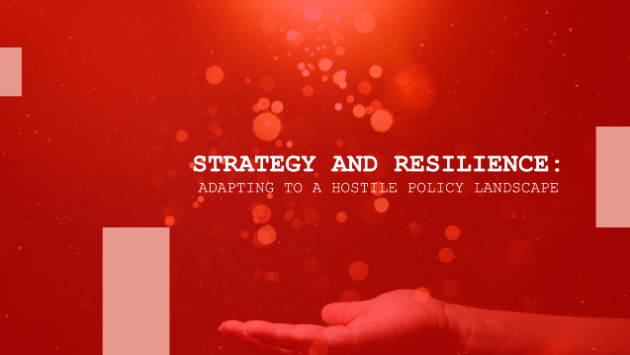How Mission-Driven Organizations Thrive Amid Challenges
- Elizabeth Tasick
- Oct 13
- 3 min read
First published January 28, 2025 on LinkedIn

Mission-driven organizations have a clear vision of the ultimate goal they seek to achieve and a concrete understanding of how they will get there. They know who they serve, what actions to take, and what success looks like. As my former boss Amb. Green, and the former head of USAID often said, we are always working toward the goal of putting ourselves out of a job.
Adaptability of Mission-Driven Work
Contrary to what some may think, truly mission-driven organizations are flexible and adaptable. Achieving a long-term vision takes time and involves navigating both expected and unexpected obstacles. Organizations with a clear sense of purpose and defined goals are better equipped to adapt when the environment shifts.
Consider a cross-country road trip. At the start, you plan your route, decide on highways to take, places to stop, and your mode of transportation. But on such a long journey, obstacles like construction or natural disasters may arise, forcing detours or changes in travel plans. Even if the route changes, the destination remains the same.
Similarly, mission driven organizations must maintain a clear focus on their destination. Every activity, campaign, or program is designed to align with their vision. External changes, like new laws or heightened state repression, may require shifts in how they operate, but these adjustments are always made with their ultimate goal in mind.
Lessons from Global Human Rights Work
For nearly two decades, I have worked with human rights organizations in some of the world’s most repressive environments. These organizations face relentless challenges, such as state propaganda campaigns, targeted harassment, and advanced surveillance technologies. Despite these overwhelming pressures, they persist, finding creative ways to protect their work and their vision.
The experience of the LGBTQ movement in China is one example where the government has severely cracked down on organizations: shuttering established organizations, closing bars and clubs, censoring content and allowing hate-speech to flourish online. Nevertheless, groups and people are finding small but meaningful ways to push back, such as successfully advocating for the removal of “conversion therapy” advertisements from WeChat.
These small victories demonstrate the adaptability and persistence required to navigate repression while staying true to a mission.
Navigating Unexpected Obstacles
Persistence and commitment are essential for mission-driven organizations, but they also demand clarity of purpose and the discipline to stay focused on the ultimate vision. Leadership plays a critical role here, ensuring that the organization remains grounded, even when faced with threats to safety or funding.
When frustration or fear sets in (or, more likely, a combination of both), pausing to reflect on the organization’s true purpose can reveal new paths forward. Reflection sessions, led by leadership or facilitated by a trusted external advisor, can provide fresh insights and strategies. External perspectives, in particular, can help organizations uncover fresh strategies for overcoming obstacles.
Tools such as ORS Impact’s Defensive Advocacy Handbook and talking with peers can also inspire innovations to your approach - whether it's using existing tools in novel ways, establishing broader alliances or new mediums – to help you navigate detours en route to your organization’s ultimate goal.
Working for social change is tremendously difficult and unexpected obstacles, such as funding cuts or legal changes, can be soul crushing and terrifying. Inspiration may be found in the Be Water philosophy of the Hong Kong democracy movement. This approach emphasizes flexibility and recognizes that no problem has a single solution. Rather, movements must continually transform and evolve while staying true to their ultimate goal. Like water finding its way around rocks, mission-driven organizations can navigate obstacles to innovate and overcome even the most daunting challenges and continue working towards lasting change.




Comments